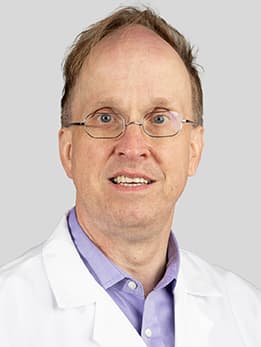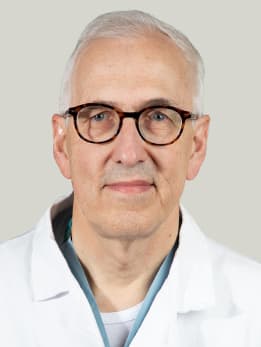Medication, therapy and now surgery offer hope for severe obsessive compulsive disorder

Obsessive compulsive disorder is a common, yet misunderstood, condition in which a person has uncontrollable, recurring thoughts and behaviors they feel compelled to repeat over and over. The popular perception of OCD is someone who’s organized and tidy or a little bit of a germaphobe, but otherwise it’s a harmless quirk.
At its most severe, however, OCD can impact someone’s ability to work, go to school, run errands, or even care for themselves. People with severe OCD have obsessions with cleanliness and germs — washing their hands, taking showers, or cleaning their homes for hours a day. Sometimes they’re afraid to leave home for fear of contamination. They may have obsessions about bad thoughts and convince themselves they’ve committed crimes or made dangerous mistakes at work, and then have compulsions about apologizing or asking forgiveness.
This can lead to shame and resignation. One person who struggled with OCD since high school didn’t wish to be identified, but said, “The mental anguish just took over. It was affecting my work and my relationships. I was in my twenties and not having any fun. I felt like I was a prisoner of my own mind.”
Jon Grant, JD, MD, MPH, a professor of psychiatry and behavioral neuroscience at the University of Chicago Medicine and an expert on addictive and compulsive behaviors, said OCD symptoms can vary greatly. People with mild symptoms are usually able to function just fine, he said, but at its worst it can be debilitating.
“Media portrayals of OCD, particularly when it's mild, make it sound like it's peculiar but no big deal,” he said. “But it is a big deal if you get in the shower as soon as you wake up and sit there all day long. The particularly horrible piece is knowing in the back of your mind that this is completely irrational but being unable to control your brain. This is no way to live.”
Seeking better quality of life
sixth-largest cause of non-fatal losses due to health.
Most people who seek treatment for OCD can be helped by medications or a special type of psychotherapy called exposure therapy. This is similar to treating phobias, where a therapist gradually introduces a patient to the things they fear to desensitize them. With OCD, patients are exposed to scenarios that trigger their compulsions.
Grant said that about 60 percent of people respond to medication, and another 60 to 65 percent respond well to additional therapy. While the goal is complete remission, he said it’s more realistic to reduce symptoms and teach patients ways to limit their behaviors. Instead of washing their hands for eight hours a day, for example, they wash for 20 minutes—still more than most people would do, but enough of an improvement that they can go on with their day.
For the small percentage of people who still don’t respond to medication or therapy, UChicago Medicine is one of a handful of medical centers in the U.S. that can perform surgery to treat OCD. Doctors don’t know what causes the condition, but it’s the rare mental disorder that has a physical manifestation in the brain. People with OCD have an overactive neural circuit between the prefrontal cortex—part of the brain involved with cognitive behavior, executive decision making and personality—and the nucleus accumbens, which is part of the reward system. Everybody has this circuit, but it’s hyperactive in people with OCD, leaving them stuck in a loop where they can’t make a decision or stop harmful behaviors.
It’s miraculous when you see people describe how they’ve gotten their lives back after surgery. These stories are quite moving, and to me, that’s what it’s all about.
This malfunctioning circuit can be interrupted with one of two surgical procedures. One, deep brain stimulation (DBS), is like a “image-guided laser surgery to target the overactive circuit. Doctors use three-dimensional images of the brain to plan procedures, then guide a 1.65 mm laser fiber through a small incision and position it next to target areas of the brain. For epilepsy patients, it would be the specific areas causing seizures; with OCD, the laser targets the overactive circuit.
Doctors take the patient to an MRI machine and send a laser beam through the fiber to heat up the tissue and ablate the target area, essentially burning it away while they monitor the temperature and the laser’s progress with the MRI. The OCD procedure makes lesions just a few millimeters wide, much smaller than what is needed for epilepsy.
Peter Warnke, MD, professor and Director of Stereotactic and Functional Neurosurgery, has pioneered both procedures at UChicago Medicine. He performed the first laser ablation procedure for OCD in the world (in a case presented at the 2016 meeting of the American Society for Stereotactic and Functional Neurosurgery), and has since performed another successful ablation and three DBS procedures.
Since the surgical techniques have already been perfected for epilepsy and movement disorders, Warnke said he is not surprised that they have adapted well to OCD.
“This is an established technique with a very well-known safety margin,” he said. “With improved imaging techniques to target more precise areas of the brain, it gives patients a better chance at an improved quality of life.”
Patients who undergo the laser ablation may see improvements in behavior one to two weeks after the procedure. Patients implanted with the DBS device need to follow up with physicians to adjust the settings to find the appropriate amount of stimulation to decrease symptoms over several months. Both procedures appear to have similar success rates. Warnke said the decision of which one to use — an implanted device versus undergoing a one-time surgery— is up to the patient’s preference.
‘It’s helped me get to where I always wanted to be’
While both of the procedures are promising, both doctors emphasize surgery should be viewed as a last resort for patients who have tried everything else. Patients who are interested in surgery must show that they have exhausted all available medications and standard therapy options, then have their case reviewed by a psychiatric neurosurgery board of experts to approve the procedure.
“It’s rare that somebody has tried everything,” Grant said, “and many times during the evaluation we’re able to provide some other medication or therapy that helps.” He adds that the procedure is not a 100 percent “cure” either. It may lessen the worst OCD symptoms but doesn’t eliminate them. Patients usually have to continue therapy or medications, which may work better after surgery.
The patient mentioned earlier in this article underwent the laser ablation procedure last year and said, “I definitely noticed a difference after a few weeks. The OCD isn’t gone, but it distresses me for a shorter period of time. I was able to correct it and use the tools I was taught in therapy.”
While meeting the evaluation requirements was difficult, the patient said, “Ultimately it’s worth it. I feel so much more confident in myself and at work. I just feel like it’s helped me get to where I always wanted to be.”
Grant said having the option of surgery to address a basic, biological function in the brain is a marked improvement over the options for many mental health conditions, which often leave a lot to be desired.
“Unfortunately, sometimes the best you can get in mental health is a little bit of an improvement in symptoms but still not much better quality of life,” he said. “It’s miraculous when you see people describe how they’ve gotten their lives back after surgery. These stories are quite moving, and to me, that’s what it’s all about.”
Patients who would like to schedule an appointment with the UChicago Medicine psychiatry clinic can call 773-834-1325.

Jon Grant, MD, JD, MPH
Jon Grant, MD, JD, MPH, is a Professor of Psychiatry at the University of Chicago and directs the Addictive, Compulsive and Impulsive Disorders (ACID) research lab.
Learn more about Dr. Grant
Peter Warnke, MD
Internationally renowned neurosurgeon Peter Warnke, MD, has performed more than 5,000 stereotactic surgeries and more than 2,000 brain tumor surgeries. Dr. Warnke provides neurosurgical care for the treatment of adults and children with movement disorders, epilepsy and brain tumors.
Learn more about Dr. Warnke